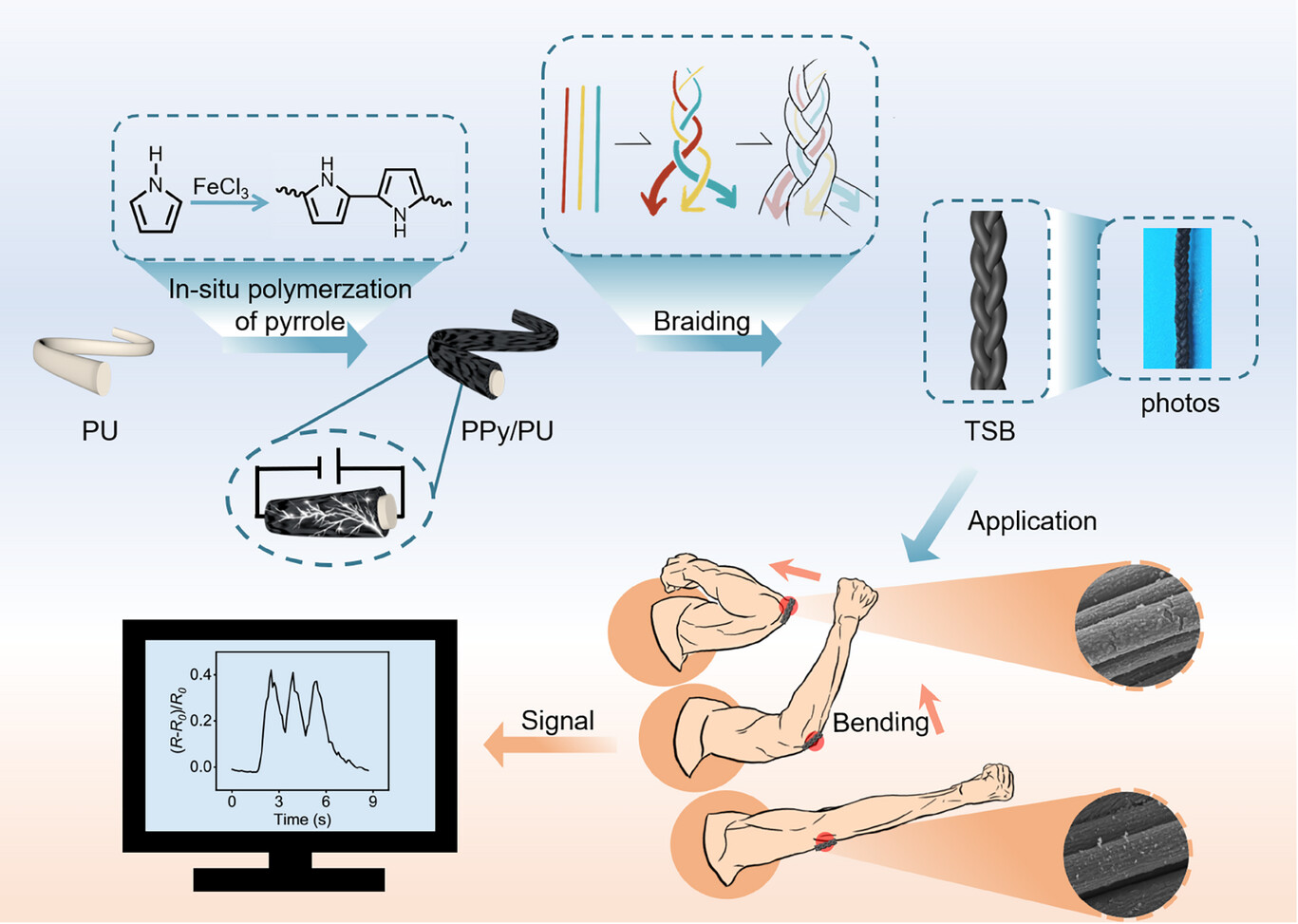Abstract:Stretchable fiber‐based electronics can be triggered by joint activities of human beings to produce varied resistance signals, provoking extensive attention from sports fitness, health care, wearables, and other related fields. The linearity of the response signal, as a quintessential parameter, is paramount for the performance evaluation of stretching sensors. In this study, three‐strand braid (TSB) is fabricated via braiding three filaments of polypyrrole/polyurethane (PPy/PU). Equivalent circuit indicates that every three adjacent segments in TSB connect in parallel, thus TSB outperforms single PPy/PU filament in electric conduction. In contrast to the single PPy/PU filament, the TSB due to its interlocked structure suffers less stress and thus constrains cracks, performing great linearity (R2= 0.995 in 0–75% strain), fast response time (40 ms), and satisfactory reciprocating stability (10 000 cycles). The working suitability tests of TSB in manifold elongations, stretching rates, and initial functional spacing suggest that the spacing of 1, 2, and 4 cm is suitable for the elongation range of 0.8–1.6, 0.8–2.4, and 1.2–4.8 cm, respectively, with stretching rates of 4–10 mm s−1. TSB is of great service for monitoring joint activities (e.g., bending of finger, wrist, elbow), and even potential in the applications like virtual reality (VR) and augmented reality (AR).
